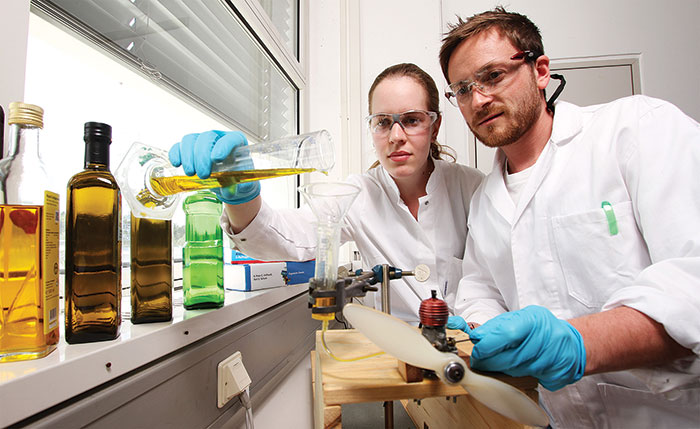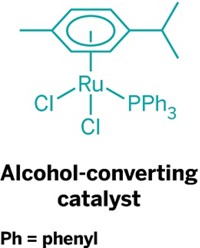Advertisement
Grab your lab coat. Let's get started
Welcome!
Welcome!
Create an account below to get 6 C&EN articles per month, receive newsletters and more - all free.
It seems this is your first time logging in online. Please enter the following information to continue.
As an ACS member you automatically get access to this site. All we need is few more details to create your reading experience.
Not you? Sign in with a different account.
Not you? Sign in with a different account.
ERROR 1
ERROR 1
ERROR 2
ERROR 2
ERROR 2
ERROR 2
ERROR 2
Password and Confirm password must match.
If you have an ACS member number, please enter it here so we can link this account to your membership. (optional)
ERROR 2
ACS values your privacy. By submitting your information, you are gaining access to C&EN and subscribing to our weekly newsletter. We use the information you provide to make your reading experience better, and we will never sell your data to third party members.
Environment
Alcohol fuels for engines
December 4, 2006
| A version of this story appeared in
Volume 84, Issue 49
In the book "Beyond Oil and Gas," George A. Olah, Alain Goeppert, and G. K. Surya Prakash do a great job in arguing how methanol may be synthesized not only from the usual 2H2 + CO  CH3OH route, but also via carbon dioxide-hydrogen synthesis and hopefully before long, 2CH4 + O2
CH3OH route, but also via carbon dioxide-hydrogen synthesis and hopefully before long, 2CH4 + O2  2CH3OH (C&EN, Oct. 2, page 51).
2CH3OH (C&EN, Oct. 2, page 51).
However, the authors tend to oversell methanol as an automotive fuel. While taking a course on engines at Lawrence Technological University, Southfield, Mich., as part of the automotive engineering curriculum, I chose as my class project the problems and potential of methanol as an alternative fuel. I have not become totally disillusioned with CH3OH, but I am more aware of problems such as engine wear resulting from formation of corrosive acids and cold-starting issues.
I believe a possible dark horse in the race for a standard alternative fuel for spark-ignition engines is neither methanol nor ethanol, but rather a mixture of methanol, ethanol, propanol, and butanol. This mixture of alcohols could be formed by passing carbon monoxide and hydrogen over a suitable catalyst.
The ideal alternative fuel lends itself to high efficiency and low emissions in automotive engines and is also easy to produce in quantity from readily available raw materials or biomass. Methanol does have some virtues in both the aforementioned criteria. I think a mixture of methanol, ethanol, propanol, and butanol might be a better fuel for engines and, like methanol, can be readily synthesized from anything one can gasify to create a hydrogen-carbon monoxide mixture.
Alex Kovnat
West Bloomfield Township, Mich.




Join the conversation
Contact the reporter
Submit a Letter to the Editor for publication
Engage with us on Twitter